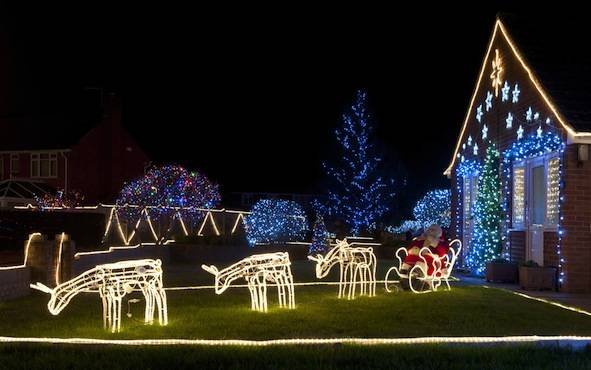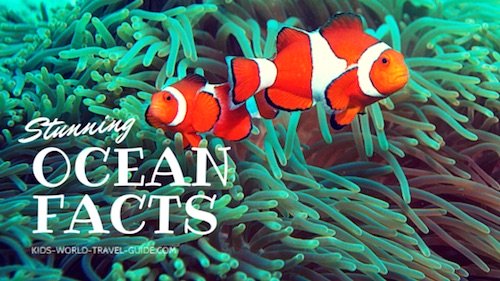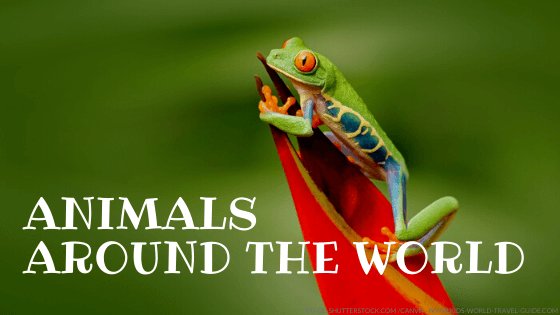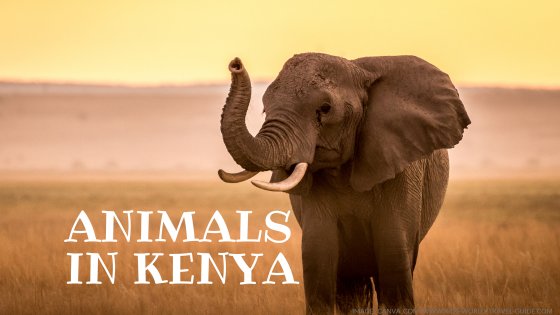- Homepage
- Christmas
Christmas Around the World
How Children celebrate Christmas
On this page you can read some fun facts about Christmas around the world. Read how kids celebrate Christmas in different parts of the world and get some interesting insights about Christmas traditions and celebrations.
At Christmas, Christians all over the world celebrate the birth of Jesus Christ. Traditional Christmas decoration often can be admired and festive celebrations can be joined in most countries, even in many of the countries where Christianity is not the religion of the majority of people. Christmas trees are a popular decoration as are tiny sparkling lights in windows and on walls.
 Christmas Celebrations
Christmas CelebrationsChristmas all over the world: Christmas is celebrated on Christmas Day, the 25th of December.
Some countries however have slightly different Christmas traditions and as such festive season celebrations take place over a longer period of time, from the beginning of December to the beginning of January. Some countries like the Philippines, even celebrate many weeks before the holiday.
Below you will find some interesting Christmas facts for various countries. If you want to learn more about other interesting Christmas traditions in those countries simply click on the links to go to our country-specific Christmas pages.
Christmas Around the World:
France
In many regions in France, Christmas celebrations start with St Nicholas day on the 6th of December. Then children get sweets and little gifts.
 Christmas Decorations in Strasbourg/France
Christmas Decorations in Strasbourg/FranceMany cities in France are decorated during the weeks leading up to Christmas and children love to open the 24 little windows of their Advent calendar. In the Alsace region, the tradition of putting up decorated Christmas trees dates back as far as the 14th century. Towns and cities are also illuminated with Christmas lights.
On Christmas eve, Children put their polished shoes out in front of the chimney and hope that ‘Père Noël’ (Father Christmas) fills the shoes with sweets. Christmas Day, 25th of December is a public holiday and families get together for a big feast. On this day also presents are exchanged.
A special outing for many families during the festive season is this year an evening visit to the magical Lumières en Seine in Paris.
Read more about French Christmas traditions on our Christmas markets and Christmas food pages.
Christmas around the World:
Italy
In Italy, a nativity scene, a ‘presepe’, is usually put up in churches, town squares and often in homes. This is for many the most important part of the Christmas decorations.
 Nativity Scene in Italy
Nativity Scene in ItalyThe nativity scene display with a crib filled with straw, originally stems from Italy and is now common occurrence in many countries around the world. In Italy, ‘Babbo Natale’, that's how Father Christmas is called in Italian, hands out presents to children on Christmas Day. Still in many families, gifts are exchanged only on 6 th of January which is the Day of Epiphany. In Italy, the people wish each other ‘Buon Natale’, which means 'Merry Christmas'.
Read more about traditions and celebrations for Christmas in Italy
Christmas in Germany
In the weeks leading up to Christmas, festive Christmas markets are set up on main squares in many cities. The Nuremberg Christmas market is often referred to as the oldest Christmas market in Germany.
 Christmas Market in Nuremberg/Germany
Christmas Market in Nuremberg/GermanyHouses are often decorated with fairy lights and festive ornaments in December, however, in Germany the Christmas tree is usually only put up and decorated at the homes in the morning of the 24th of December.
Festive Christmas celebrations in Germany begin on the 24th of December, on Christmas Eve. Shops close early on Christmas eve, so remember that you have to get your Christmas shopping done until lunchtime. The 26th of December is a public holiday in Germany too and many families celebrate on this day together, go to Church or enjoy a little excursion to a nearby park.
Read here how Christmas is celebrated in German families.
Christmas in England
In England, most people start with Christmas decorations early, that is as early as mid of November. Many families decorate their houses with lots of fairy lights and sparkling displays.
 Christmas Decorations in England
Christmas Decorations in EnglandOften the house owners collect donations from visitors to their displays in aid of local charities. So remember if you like a display place some spare coins into the honesty boxes and help the good causes.
The festive season is celebrated for a whole month with Christmas markets, light installations and visits to the ice rinks. Kew Botanical Gardens is known for the fabulous Christmas lights trail and stunning festive displays.
Christmas is celebrated on Christmas Day, the 25th of December. 26 December is a bank holiday as well.
On Boxing Day, the 26th of December, friends and family are usually visited to exchange gifts.
Christmas in Norway
In Norway, children wait for ‘Julenisse’, the Norwegian Santa Claus. On Christmas Eve, the ‘Julenisse’, brings presents to the children.
During the month of December, children wait eagerly for ‘Jul’, that is how they call Christmas.
The Norwegians wish each other God Jul! which means Happy Christmas!

Christmas in Iceland
In Iceland, children put their shoes on the windowsill so the ‘Juletide Lads’, the Santa Claus, fills the shoes with little goodies.

Christmas celebrations in Iceland start on 24th of December, Christmas eve. Families get together and enjoy good food and many visit midnight mass.
Christmas in Portugal
The Portuguese start their Christmas celebration on Christmas Eve on 24th of December. Houses are decorated for Christmas and many families put up a nativity scene (presépio), where Baby Jesus is added to the crib after the family attends Midnight mass. Children put out their shoes for Baby Jesus, not Santa, and gifts are exchanged after the family has attended a Christmas service on Christmas eve.
In some towns and villages, the community gathers then also around a fire in the church car park that has been lit and wish each other 'Feliz Natal'. Read more here.
Christmas markets are not that common in Portugal, however, the capital city Lisbon is known for its huge artificial tree has been which is sparkling with with thousands of green lights.
Another unique display is the Santa at Agueda which is the biggest Santa in the World. This Santa display is 21 m/ 69 ft tall and includes 250,000 LED lights.
 Santa di Agueda - image by Luis Pedro Fonseca
Santa di Agueda - image by Luis Pedro FonsecaChristmas in the Philippines
In the Philippines, Christmas is celebrated over the three months leading to the big holiday. There is a special Filipino tradition of decorating your home with a Christmas lantern, which is called ‘paról’; the lantern is star-shaped, remembering the star of Bethlehem, and mainly made out of bamboo and paper. In the image below you can see how the lanterns look.
 Christmas in the Philippines
Christmas in the PhilippinesThe Christmas lanterns are on sale during Christmas time in the many markets in the Philippines. Read more about Christmas in the Philippines in the essays of our fabulous award-winning students who share their insights about the festive season in their home country.
Christmas around the World:
Singapore
In Singapore, about two in ten people are Christians. Christmas, however, is very commercialised in Singapore and Christmas decorations are abundant in the city with masses of tiny fairy light decorations.
 Singapore Shopping Malls Christmas Decorations
Singapore Shopping Malls Christmas DecorationsStunning decorations can be seen everywhere in the main shopping district, Orchard Road as you can see in the image below.
Or visit the Gardens on the Bay for a truly stunning Christmas Wonderland and yuletide fair with light installations and concerts. The Christmas Wonderland is open until 1 January at Supertree Grove.
There are light and sound shows, blizzard time and many other events at Supertree Grove, Santa's Village, Mistletoe Alley and more.
Christmas around the World:
Australia
In Australia, it is tradition in the weeks up to Christmas to join in Christmas picnics organized by various churches and sing Christmas carols on the beach. As Australia is in the southern hemisphere, the festive season is during summer time and thus it is easy to understand that during Christmas time friends and family often gather at the beach.
 Christmas on Bondi Beach near Sydney/Australia
Christmas on Bondi Beach near Sydney/AustraliaYoung people, families and friends gathering in Bondi Beach near Sydney on Christmas Day.
Christmas in Brazil
In Brazil, you will often find a ‘presepio’, a crib or nativity scene, in front of a church. ‘Papai Noel’, or Father Christmas, travels from Greenland to Brazil to give presents to Brazilian kids.
Many cities display Christmas trees during the month leading up to the festivities and often the yearend is celebrated with fireworks. The floating Christmas tree in Rio de Janeiro is said to be the largest Christmas tree in the world.
In Brazil, you say 'Bom Natal' or 'Boas Festes' if you wish somebody Merry Christmas.
Christmas in South Africa
In South Africa, the weeks before Christmas, people celebrate Christmas on the 25th of December. On Christmas Day the family gathers at a 'braai', which is the South African version of a barbecue.
In South Africa it is summer season in December. Many people visit Christmas mass on Christmas day as well. There are few natural Christmas trees, but some people put up decorated artificial trees in their homes.
 Christmas Tree at the Cape Town V&A Waterfront/South Africa
Christmas Tree at the Cape Town V&A Waterfront/South AfricaMany shopping centres are transformed with Christmas decorations. Above you can see the modern Christmas tree which was standing in front of the V&A Waterfront Shopping Centre in Cape Town. The shopping centres are often decorated with African crafts such as woven baskets made by the Zulu people and other installations by local designers who use recycled material.

There are many festive concerts as well as gifts and arts & crafts markets held during the weeks leading up to Christmas Day.
Read more about Christmas in Cape Town here.
Christmas around the World: Christmas in the USA
In December many families decorate their houses with Christmas ornaments and Christmas lights. Read more about Christmas traditions here.
Christmas is celebrated on 25th December. On Christmas Day, families get together for a festive meal after exchanging gifts.
 House decorated in New York - image by Leonard Zhukovsky
House decorated in New York - image by Leonard ZhukovskyIt is customary to send and give Christmas cards. People write on cards: 'Merry Christmas!' or 'Merry Xmas!'
Xmas stands for Christmas, the X originates from the Greek letter 'Chi' which represents the word 'Christós' or Χριστός which means Christ in English.
Read here how people wish Merry Christmas in other languages.
 Christmas in New York/USA
Christmas in New York/USAFun Christmas time in the ice-rink at Rockefeller Centre in New York City.
Christmas Special Pages
Image credits for Christmas Around the World: own images and shutterstock.com
Back from Christmas Around the World to KidsWorldTravelGuide Homepage
*
More about Christmas
***
***
***
Like us
Spread the Word

|
Copy and paste into mails and onto your website, blog or Facebook page: <a href="https://www.kids-world-travel-guide.com/christmas-around-the-world.html">Kids World Travel Guide: Christmas around the world</a> |















































